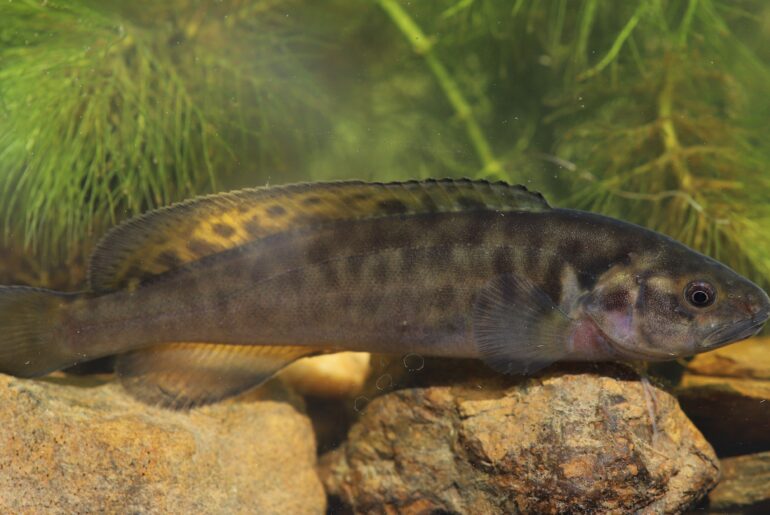All of the currently available methods for Carp (Cyprinus carpio) control have limitations. Integrated pest management involves the application of a number of control techniques at once so that the harmful impacts caused by a pest can be minimised by a concerted, targeted effort. Management activities focus on reducing impact, rather than simply decreasing numbers of the pest. The objectives of this project were to achieve significant reduction in the abundance and biomass of Carp at a ‘hot spot’ wetland, and to quantify the ecological benefits of Carp biomass reduction for native fish, submerged vegetation, macroinvertebrates and water quality.
This project originally commenced at Banrock Station wetland in March 2007, but was abandoned in 2008 due to very low water levels and reduced flow. Brenda Park wetland located in the township of Morgan became the focus of the study as the wetland has historically supported a large population of Carp. These plots were then sampled from 2009-2011 for water quality, vegetation, macroinvertebrates and fish.
Fenced enclosures were constructed in Brenda Park Wetland to monitor ecological response to Carp removal, by comparing the diversity and abundance of fish vegetation, macroinvertebrates and water quality among ‘exclusion’ and ‘control’ plots along ‘edge’, ‘open water’ and ‘deep open water’ habitats.

Findings:
The study found that there were much more Carp in the edge and open wetland habitats compared to the deep habitat. Carp were also more abundant in the un-fenced and semi-fenced plots compared to the fully-fenced plots. There was a decrease in water clarity, vegetation cover and biomass (of other fish species) with increasing numbers of Carp. Macroinvertebrate abundance and composition varied between the different sorts of plots, and with each sampling period. There were significant differences in water quality (eg temperature, pH and dissolved oxygen) with each sampling effort.
Australian smelt (Retropinna semoni) and the introduced Eastern gambusia (Gambusia holbrooki) and Goldfish (Carassius auratus) were more abundant in the edge habitat. Small native species (Un-specked hardyhead , Craterocephalus stercusmuscarum, Carp gudgeon, Hypseleotris spp., and Flat-headed gudgeon, Philypnodon grandiceps) preferred both the edge and open habitats, and Bony herring ( Nematalosa erebi ) and the introduced Redfin perch ( Perca fluviatilis )were more common in the deep habitat. Bony herring and Redfin perch were more abundant in the un-fenced plots than the semi-fenced and fully-fenced plots.
Related Projects and References:
Evaluation of carp exclusion screens at wetland inlets
Design and installation of a novel wetland carp harvesting set up at Lake Bonney, South Australia
Carp management plan for the Upper Murrumbidgee Demonstration Reach
Sea to Hume Fishways Report
Carp Management in the Murray-Darling Basin: Daughterless Carp Technology
Guidelines to inform the selection and implementation of carp management options at wetland inlets
History of management and control of carp in Australia



